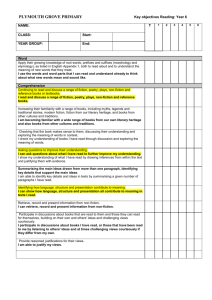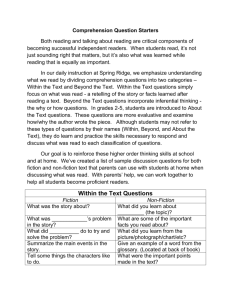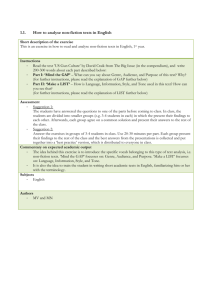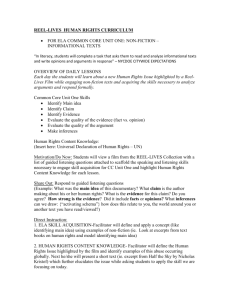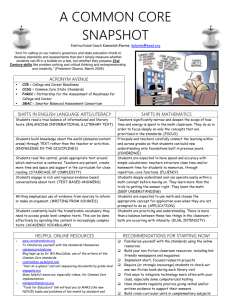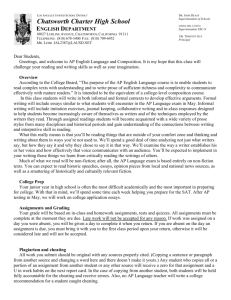Year 6 writing cards
advertisement
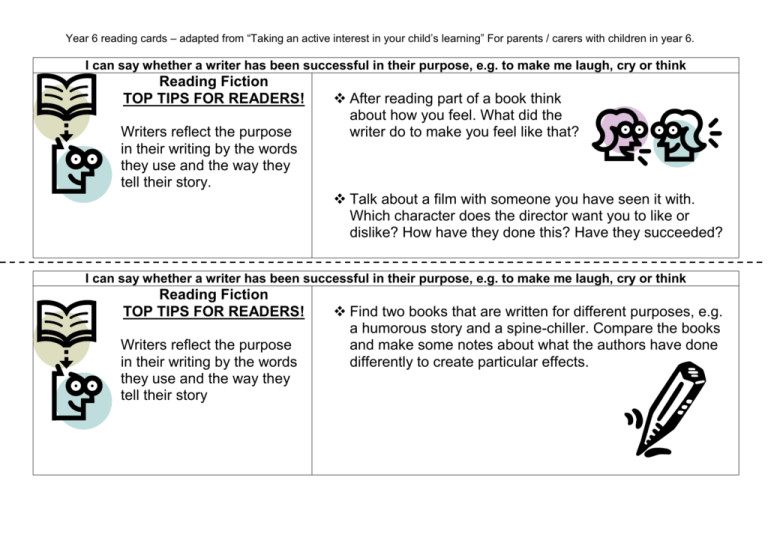
Year 6 reading cards – adapted from “Taking an active interest in your child’s learning” For parents / carers with children in year 6. I can say whether a writer has been successful in their purpose, e.g. to make me laugh, cry or think Reading Fiction TOP TIPS FOR READERS! Writers reflect the purpose in their writing by the words they use and the way they tell their story. After reading part of a book think about how you feel. What did the writer do to make you feel like that? Talk about a film with someone you have seen it with. Which character does the director want you to like or dislike? How have they done this? Have they succeeded? I can say whether a writer has been successful in their purpose, e.g. to make me laugh, cry or think Reading Fiction TOP TIPS FOR READERS! Writers reflect the purpose in their writing by the words they use and the way they tell their story Find two books that are written for different purposes, e.g. a humorous story and a spine-chiller. Compare the books and make some notes about what the authors have done differently to create particular effects. Year 6 reading cards – adapted from “Taking an active interest in your child’s learning” For parents / carers with children in year 6. I can identify the purpose, audience and organisation for different purposes Reading non-fiction TOP TIPS FOR READERS! Non-fiction (information texts) cover a range of types: they can retell events, give instructions, provide information, explain something, persuade or put forwards an argument. Find different types of non-fiction texts at home. This could include web-based texts, cereal boxes, newspapers as well as books. Identify what type of text they are (think about the purpose) and who the intended audience is. Non-fiction texts use tables, pictures and diagrams to add extra information so it is important to take notice of these when reading. I can identify the purpose, audience and organisation for different purposes Reading non-fiction TOP TIPS FOR READERS! Non-fiction (information texts) cover a range of types: they can retell events, give instructions, provide information, explain something, explain something or put forwards an argument. Non-fiction texts use tables, pictures and diagrams to add extra information so it is important to take notice of these when reading. Find a few of the same kind of texts e.g. instructions. Compare them and carefully note the differences and similarities. What are the different audiences that they are written for? How does the style differ? Which do you think are the best? Why do you think this? Year 6 reading cards – adapted from “Taking an active interest in your child’s learning” For parents / carers with children in year 6. I can explain how a writer has created a mood or feeling using evidence from the text Reading Fiction TOP TIPS FOR READERS! Writers choose carefully what they write so that we can picture in our head. Often the writer leaves us to try and guess what characters feel or why they have done something. Watch a film and talk about how the atmosphere is created by the setting, the words that are spoken and the music or background noises. Freeze-frame a scene from your favourite video or DVD. Write down as many words as you can to describe the setting and the mood. When you are reading, pause and try to identify which words and phrases are used to create the mood in a story. I can compare texts in terms of their impact on the reader Reading Fiction TOP TIPS FOR READERS! Writers choose vocabulary carefully and organise their texts so that the reader will be interested and understand the purpose of the text. Read a text that uses different devices such as diagrams, sub-headings, labels, etc. Think about how the organisation helps the reader to understand the text. Which words are particularly helpful or appropriate? Watch a few adverts and think about how the images, sounds, music and voice are organised to ensure that the ‘reader’ will be persuaded to buy the product. Year 6 reading cards – adapted from “Taking an active interest in your child’s learning” For parents / carers with children in year 6.


